- 11 Best Long Planter Boxes to Enhance Your Garden With - January 5, 2024
- Best Bulb Planters That You Should Consider for Your Garden - January 5, 2024
- Best Fiberglass Planters That Will Look Marvelous In Your Home - December 31, 2023
Sometimes, there are areas in our flower garden where no plants thrive. It’s usually the wet and boggy areas that are empty, with only weeds growing in patches. If you have this problem, then you might be interested in Japanese irises.
There is something about Japanese iris that makes it an excellent choice for those patches of land that are too wet to nurture other plants. This plant is tolerant of boggy and waterlogged soil and can even grow in standing but shallow water.
But how exactly do you grow this flowering plant? Read on as we teach you how to care for Japanese irises, from extracting and planting the seeds to pollinating the flowers and propagating them.
Japanese Iris: What You Need to Know
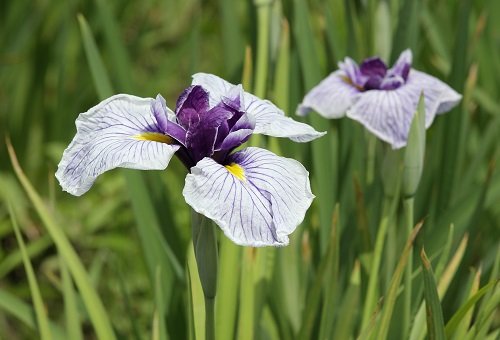
With their large and beautiful blooms, the Japanese iris is one of the flowering perennials you should try growing. Not only do they bloom prettily, but they are also straightforward to care for and grow.
These plants can grow tall, with some reaching three to four feet (91.4 to 121.9 centimeters). Compared to more common irises, the flowers of the Japanese iris are flatter and broader. These flowers can also have one or two colors, or sometimes these blooms can look like a peony.
These flowers bloom later than most other plants in the garden, and they don’t last for a long time.
Technically, there are three Japanese iris species:
- Iris ensata, or hanashobu
- Iris laevigata, or kakitsubata
- Iris sanguinea, or ayame
Each variety has its own characteristics:
| Common flower colors | Leaf artery | Grows in | Blooms in | |
| Hanashobu | Purple and red-purple | Distinct | Wetland | June |
| Kakitsubata | Purple, white, and blue | Small | Wet lands or in water | May |
| Ayame | Purple | Has one main artery | Dry land | May to June |
Outside of Japan, however, most people know Iris ensata as the Japanese iris. Iris ensata is very popular for those looking to add color and beauty to wet areas in their backyards.
So if you have a wet spot in your garden where no other flowering plants might thrive, give Japanese irises a try. They are quite easy to grow and care for and can be put near a small body of water such as a pond. Their blue, white, or purple blooms will thrive in anything from moist soil to standing water.
But how do you grow and care for Japanese irises?
Location: Knowing Where to Put a Japanese Iris Plant Is Half the Battle
Planting Japanese irises will ensure that you will have an easier time growing and caring for them. Plant them in a boggy area, unlike the more popular bearded iris that needs well-draining soil.
If you have a pond or a rain garden, adding a Japanese iris or two will surely make it more beautiful. You can plant these with a lot of fern varieties such as cinnamon fern, royal fern, or painted fern.
Other plants that you can place in bogs, rain gardens, or ponds include:
- Water hyssop
- Cattail
- Canna
- Elephant’s ear
- Swamp sunflower
- Pickerelweed
The Best Type of Soil for the Japanese Iris
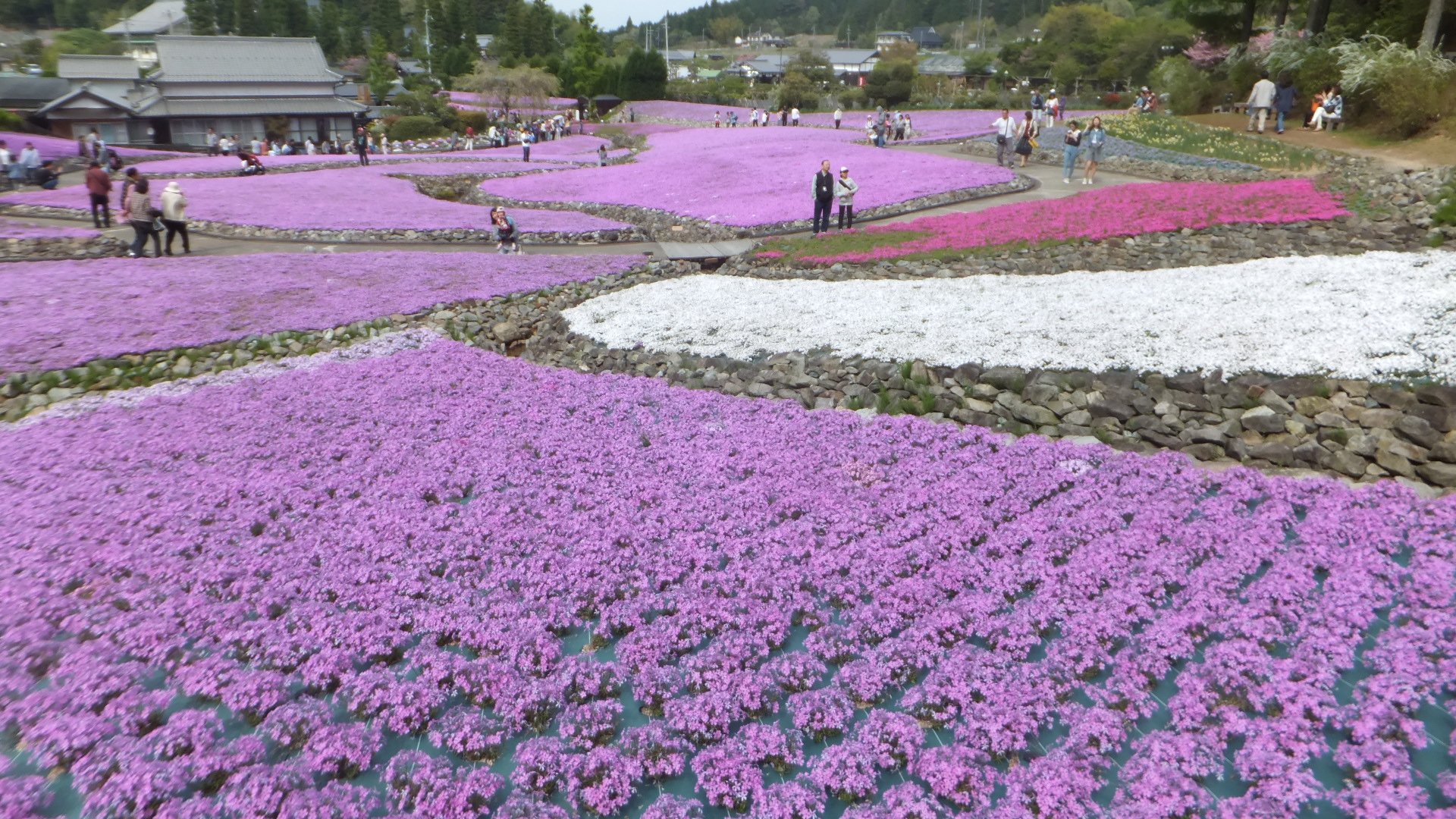
If you don’t have well-draining soil, don’t fret. Japanese irises can do well without it. These plants thrive in rich soil. You will need to amend it with the organic matter by adding compost or well-matured manure.
The soil should have a pH balance of around 5.5 to 6.5. Japanese iris likes slightly acidic soil. The good news is that garden soil for most parts of the North American continent is somewhat acidic, having a pH of 6.0 to 7.0.
How do you know if the soil is slightly acidic even if you don’t have a testing kit lying around? Get a sample of the soil and mix water in it. Add in about half a cup of baking soda to see if it fizzes or forms bubbles. Gauge by the fizzing reaction to see just how acidic your soil is.
If it fizzes a lot, then the soil you have might be very acidic and may not be suitable for growing Japanese iris. In this case, you should amend the ground some more.
You can also test if the soil is alkaline, making it unsuitable for your Japanese iris to grow in and flourish. Instead of baking soda, add vinegar to the water and soil mixture. The vinegar is a type of acid, and it will react with alkaline soil and fizz.
What You Can Add to Have the Ideal Soil for Your Japanese Irises
So if you have very acidic soil or alkaline soil, it’s bad news for your Japanese irises. But you can quickly correct these:
- To make the soil more alkaline: Add agricultural lime or wood ashes.
- To get more acidic soil: Add sulfur, vinegar, or sphagnum peat.
Compost can also help buffer the soil’s pH by making it more stable. Compost brings your soil closer to neutral pH, so adding it will make alkaline soil more acidic and acidic soil more alkaline.
Japanese Iris: Watering Requirements
As you already know, Japanese iris plants like wet areas and even shallow standing water. Don’t let your Japanese iris dry out completely.
Constant watering is needed for healthy plants. It’s also a requirement if you like large flowers. If you have a body of water in your garden, plant your Japanese irises near these.
More importantly, you should know that while the Japanese iris is fond of water, you should never let its crown go underwater for very long. Doing so will result in rot.
Propagating Japanese Irises
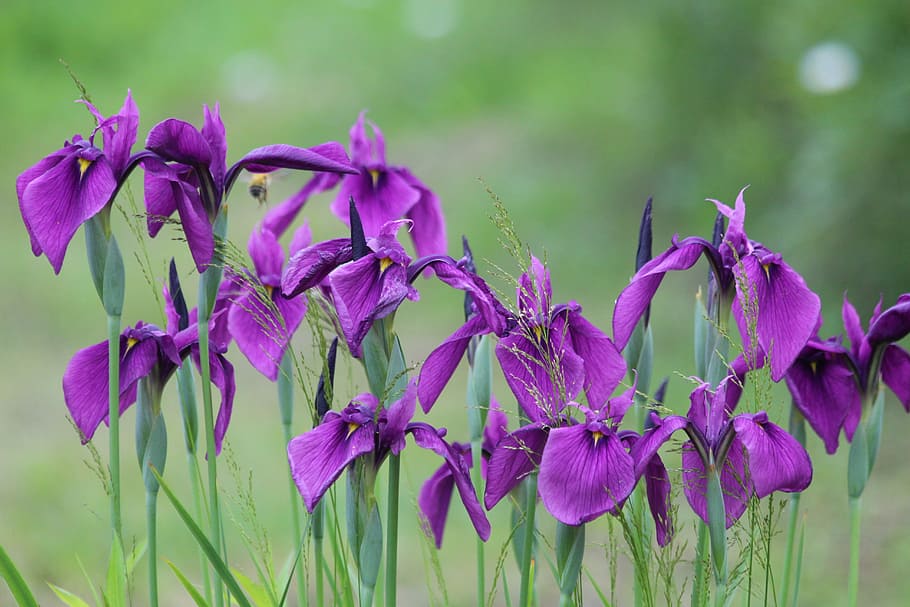
Now that you know the soil and watering requirements to keep your Japanese iris happy, you can start planting the rhizomes. It would help if you buried the rhizome about two to three inches (5.1 to 7.6 centimeters) into the soil. Be sure to leave at least six to eight inches (15.2 to 20.3 centimeters) of space between two rhizomes.
If you are planting different Japanese iris varieties, make space wider, around 18 to 24 inches (45.7 to 61 centimeters).
Tips for Planting Rhizomes
After planting the rhizomes, be sure to water them to start the development of the roots. Keep the newly planted rhizomes well watered for the first two weeks. You can plant Japanese irises in a shallow depression so that you can flood it with water.
If there are no natural depressions in the area where you’re planting, you can dig a shallow well around your newly planted rhizomes. These shallow wells can be flooded with water to keep your plants moist.
Planting Japanese Iris from Seeds
While planting rhizomes might be the easiest way to have Japanese irises in your backyards, you can also grow these from seeds. It will take more time for the plants to bloom, but if you’re the type that derives great satisfaction from seeing something sprout, the good news is that you can.
According to this how-to from the Australian Lilium and Bulb Society, it is best to sow the seeds right after you harvest them. Doing so will mean a faster germination time of about two weeks. If you have older seeds, these can take two years to germinate because of an inhibitor that develops when the seed becomes dry.
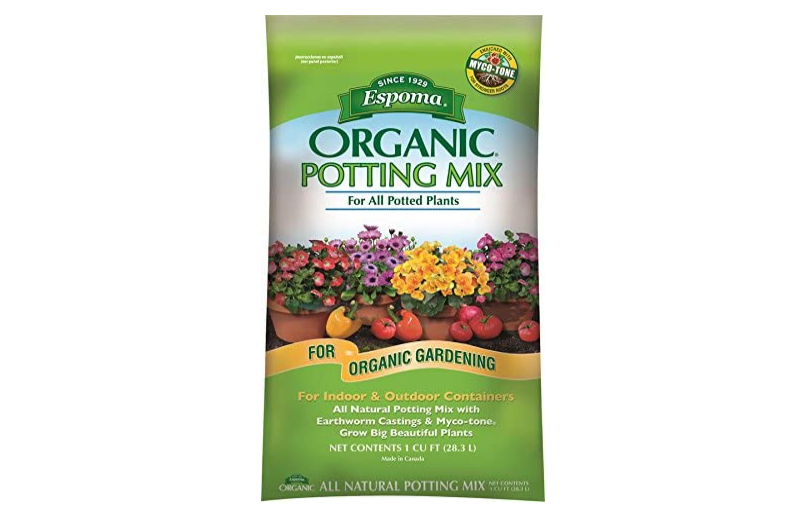
You can put these seeds in a Jiffy Pot that’s made of peat. Fill the peat pot with a potting mix, and then add seed raising mix on top. You can just spread the seeds over this before you cover it again with a raising mix. You can plant one seed pod in one pot.
Then place these pots in a tray. The tray will provide the pots with standing water, helping your new plants to get all the moisture they need Wait until the seedlings grow big so that you can handle them safely. You can then transfer them into bigger plant tubes, fertilize them, and then move them to your pond.
The tubes should be in a tray when you place them into your pond. After three months, you can transplant your Japanese irises into regular pots and fertilize them again. Japanese iris plants started from seeds can take around 18 months or longer from the time you plant them to seeing their first blooms.
Pollination
For the most part, bees and other insects will help you pollinate your plant. Pollination provides you with the seeds that you can grow into new plants.
Choosing only the best flowers, you should:
- Remove the stamens from one flower and set it aside.
- Choose another flower that will become the pod parent and do the same.
- Get the stamen from the first flower and rub the pollens underneath the styles of the pod parent.
The pods will take around two months to mature before it can be harvested. Wait for the pod to start splitting before take them off the flower. Take out the seeds and store them in paper envelopes to further dry them. You can also use silica gel and other desiccants to find in vitamin bottles to get them to dry faster.
Dividing Your Japanese Irises
If you already have Japanese iris growing in your backyard, you are lucky. These irises will produce a lot of rhizomes that you can divide.
Use a sharp knife to cut individual rhizomes as irises tend to clump together. Then you can repot them in several pots.
Light Requirements
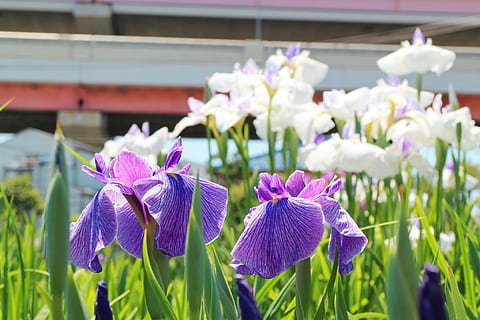
Japanese iris enjoys full sunlight. You will need to put it in an area where it gets at least six hours of light to encourage it to flower and bloom beautifully.
If you live in an especially hot area, your Japanese irises will thank you if you can provide them with some shade from the afternoon sun.
Dormancy
Japanese iris enter dormancy during the colder winter months. At this point, these plants will die if you keep them in standing water or boggy soil.
An excellent piece of advice when growing Japanese iris is just to plant them in pots. During their growing season, you can put these pots in standing water and keep the soil moist. But when the colder months come, you can transfer them to a drier spot.
Fertilizer
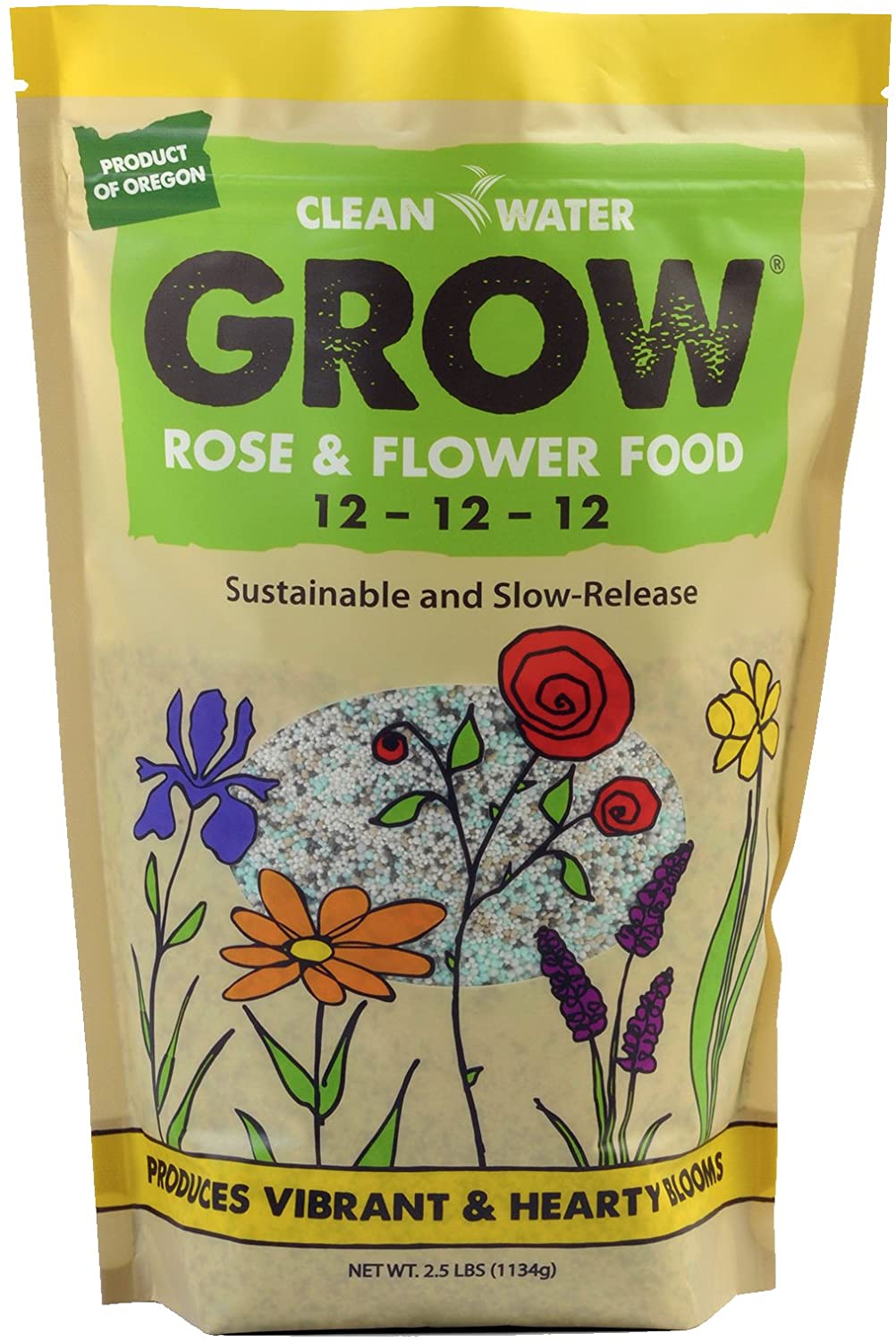
Japanese irises can prove to be heavy feeders, so you must keep them fertilized. A balanced fertilizer like the Clean Water Grow Rose & Flower Food will be a great way to keep these plants healthy and encourage their blooms.
Pests and Diseases
The good news for Japanese iris growers is that they are not susceptible to serious diseases and insects.
However, you should watch out for snails and slugs, which love to feast on them. You should also watch out for root rot if you leave them in standing water during winter.
Other Care Tips
What other things should you remember when you’re caring for Japanese irises?
- When planting Japanese irises, you should bury the rhizomes by two to three inches (5.1 to 7.6 centimeters) into the ground.
- Cover the newly planted rhizomes with mulch to help keep the soil moist and keep the weeds away.
- Keep the crowns of this plant out of the water. It can rot if the head is underwater for too long.
- The best time to plant Japanese irises is in spring or autumn.
- The easiest way to propagate is to divide the rhizomes and plant them individually.
- Prune any dying foliage during autumn. You can also cut away the flower stems after they bloom.
- You don’t have to have a pond to grow Japanese iris. But you will need to make sure that the soil is moist, specifically when they’re actively growing.
FAQs
Answer: Rhizomes are not roots. They are stems that grow horizontally. These stems usually grow beneath the ground. Iris, as well as asparagus, ginger, and hops, have rhizomes.
Rhizomes have two purposes. The first is that they make the new roots and push them down into the soil. Secondly, rhizomes can grow new stems and pushes them out of the earth. Rhizomes can store proteins and starches, or those materials that allow the plant to survive a bad season.
Answer: No ponds? No problem! There are pre-cut pond liners that you can buy, like the ACTREY PVC Pond Liner that measures 10 by 13 feet (3.0 by 4.6 meters).
You just set this up, and you can make your own pond.
To make it easier to manage, you can cut this in half, giving you a pond that is 13 feet (396.2 centimeters) long, around four inches (10.2 centimeters) deep, and 4.35 feet (132.6 centimeters) wide.
Having two ponds in this set up will make it easier for you to reach for the pots of Japanese irises in the middle.
Ponds with a depth of two to four inches (five to 10 centimeters) is enough to keep the soil damp and your plants thriving and healthy.
Answer: Japanese irises have different colored flowers and look depending on their cultivar. Here’s a shortlist of our favorite cultivars to give you an idea of what’s out there.
1. Alpine Majesty
The Alpine Majesty is recognized by the Royal Horticultural Society as a top-quality plant, bestowing its Award of Garden Merit. This cultivar has big white flowers with yellow throats. These Japanese irises can go up to 40 inches (101.6 centimeters) in height and usually blooms starting in the earlier part to the middle part of summer.
2. Blue Spritz
Another award winner, the Blue Spitz has two layers of ruffled petals with a faint blue and violet color. It can grow up to 35 inches (88.9 centimeters) and blooms early in the summer, right through the middle months. The Blue Spitz has been given the Payne Medal in 2005 and retains the distinction of being the top recognized Japanese iris cultivar by the American Iris Society.
3. Agripinella
This Japanese iris can have large blooms that can go up to eight inches (20.3 centimeters) across. Their flowers have a rose-pink hue that is slightly ruffled with a white and yellow blotch at the center. Not only are their flowers huge, but Agripinella can grow up to 36 inches (91.4 centimeters) in height.
A single stem can hold anywhere from a single to three flowers.
4. Coho
While most Japanese irises have a bluish to purple tint or white, Coho dares to be different with its large pink petals. This cultivar is known to grow to a height of up to 38 inches (96.5 centimeters). This cultivar was also a Payne Medal awardee in 2012.
5. Frilled Enchantment
The Frilled Enchantment has ruffled white flowers that are bordered by a magenta or lilac ribbon. This cultivar can grow up to 42 inches (106.7 centimeters) tall and is a recipient of the RHS Award of Garden Merit.
6. Pink Frost
The gently frilled pink frost has pink and lavender flowers accentuated by white blotches and a yellow throat. This cultivar blooms midseason and grows up to 30 inches (76.2 centimeters) tall.
7. Carol Johnson
is cultivar can catch anybody’s eye with its big single flowers that have purple to plum colors with golden yellow tiny throats. Carol Johnson can spread up to two inches (5.1 centimeters) and grow up to 32 inches (81.3 centimeters).
8. Iris Ensata Variegata
Variegated Japanese irises have silvery or whitish leaves and dark purple flowers. If you want a unique Japanese iris growing in your backyard, this is the one you should choose.
The silver foliage and dark purple blooms are not meant to be hidden, as this cultivar can grow up to 35 inches. It also stays variegated throughout the whole season.
Summing It All Up: The Japanese Iris Cheatsheet
To make it easier for you to remember how to care for your Japanese iris, here’s a quick summary:
| Hardiness Zones | 4 – 9 |
| Type | Perennials |
| Family | Iris Ensata |
| Sunlight | Full Sun, Partial Sun |
| Height | 2 to 4 feet (61 to 121.9 centimeters) |
| Spread | 1 to 2 feet (30.5 to 61 centimeters) |
| Spacing | 18 to 24 inches (45.7 to 61 centimeters) |
| Planting depth | 2 inches (5.1 centimeters) |
| Low maintenance? | Yes |
| Watering needed? | Average |
| Soil type | Slight acidic clay, loam, or sand |
| Soil drainage | Poorly draining soil |
| Safe against | Deer, pests, diseases, boggy and wet soil |
Watch this video to see how amazingly beautiful the flowers are and how to care for your plant.
Japanese Irises Are Utsukushii (Beautiful!)
Japanese irises are one of the easiest plants to care for when they’re already planted. You only need to remember to keep the soil moist and take them to the drier ground when they’re not actively growing.
And your reward is stunning and large flowers late in the season when all other flowers have bloomed and wilted.

